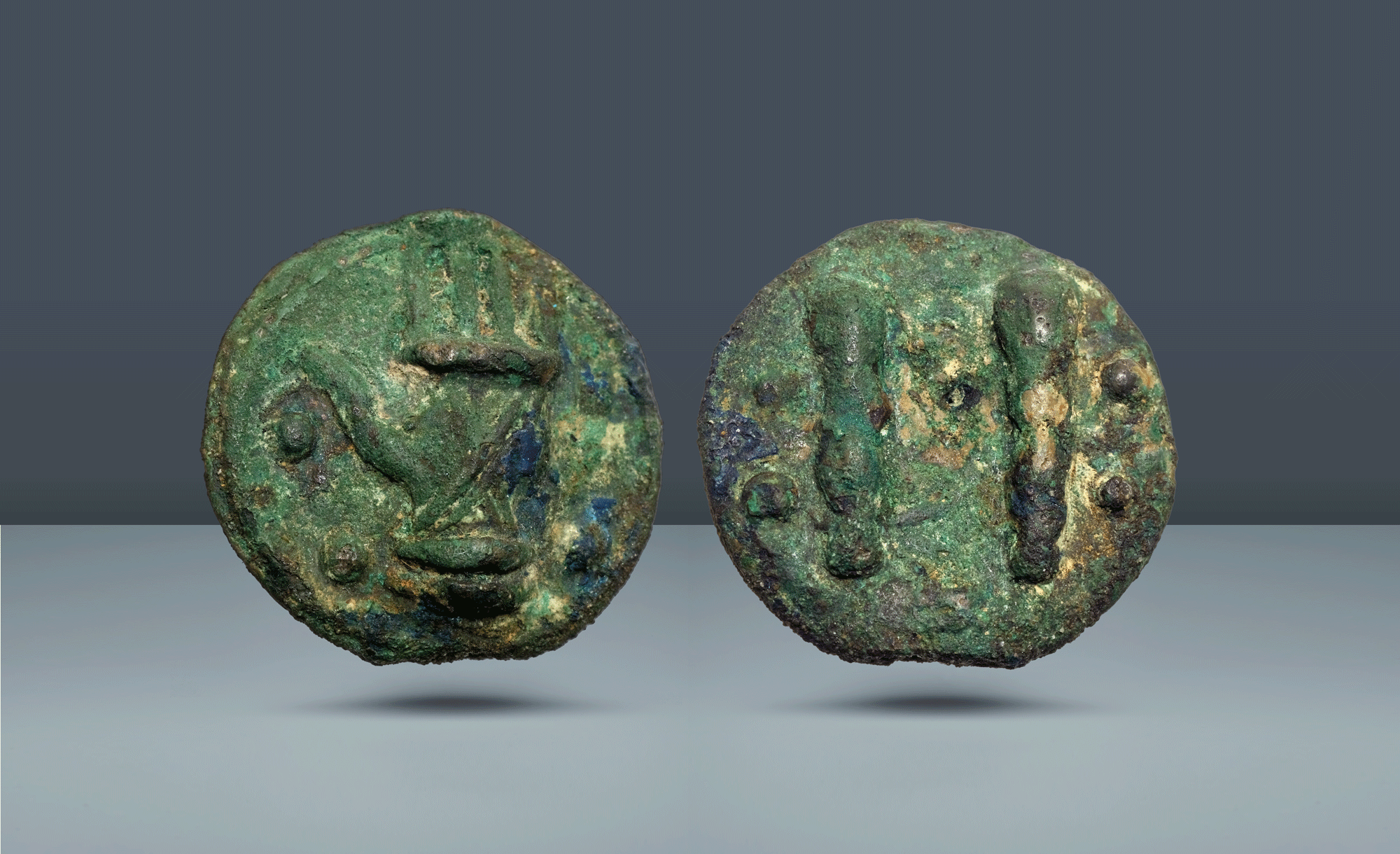Italy, Umbria. Tuder, c. 220-200 BC
Italy, Umbria. Tuder, c. 220-200 BC
Cast AE Triens, 23.32g (29mm, 12h).
Right hand wearing cestus; above and below, two pellets ( mark of value) / Two clubs; above and below, two pellets (mark of value)
Pedigree: From the collection of Major Anthony F. Milavic, USMC (Ret.), acquired from Victor England in February 1989.
References: Campana 12. HN III 47. ICC 224. Thurlow-Vecchi 165.
Grade: Light green encrustation overall. High relief with good details. EF for issue
rr1323
Scroll down for more information about this coin.
One of the major distinctions between the Roman and Greek worlds was the prevalence of formalized, state sponsored games. In Greece they seem to have either been centered mainly around celebrations or have been held as their own for of religious festival. In Rome however, the gladiatorial fights became known as one of the many tools to appease the masses. Hence the saying panem et circenses or bread and circuses. Interestingly; the cestus, the ancient predecessor of the modern boxing glove, can be seen on this particular coin with great relief. Unlike previous iterations the Romans were much more aggressive. While the practice of wrapping fighters’ hands in cloth or rawhide can be attested to as far back as 3000 BC, the Romans innovated and began gluing a thin copper bar to the athletes’ hands to cause greater damage and act as a sort of improvised set of brass knuckles.

